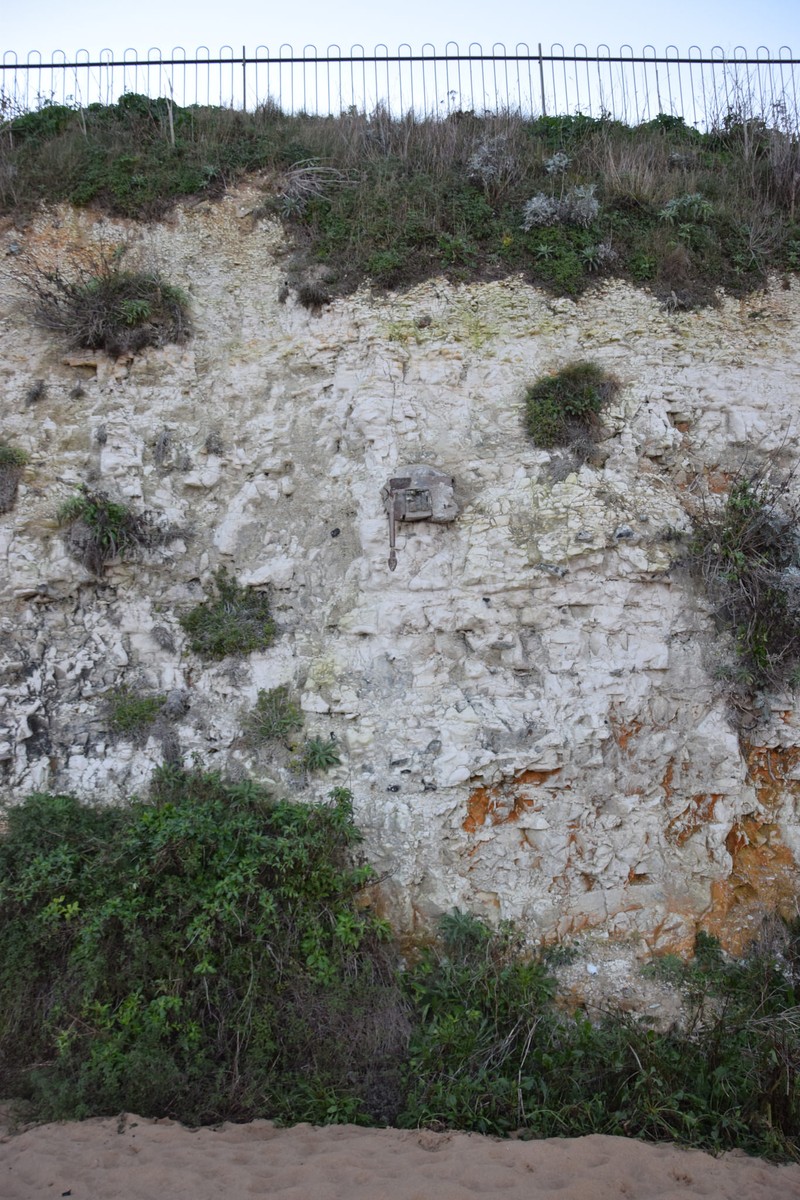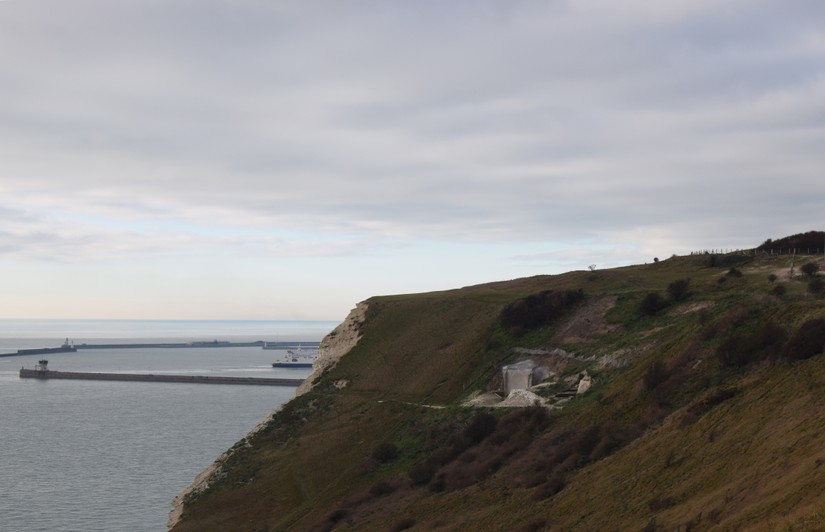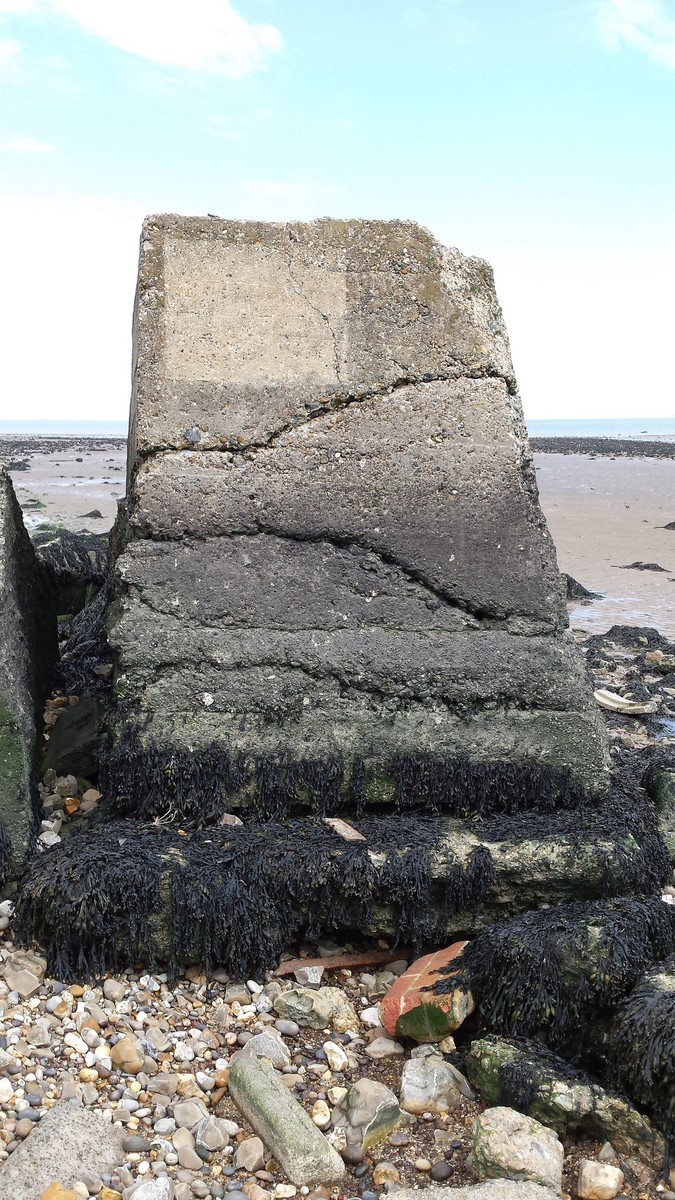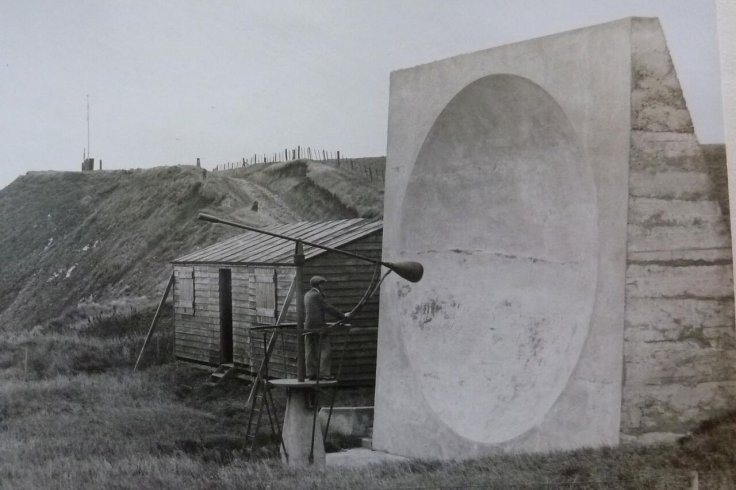Ears to the sea: sound mirrors of south east England
12/02/2016 | Lara Band
Along the east and south coast of England, in various states of survival, are the remains of concave concrete listening posts dating from the late 1910s - early 1930s: sound mirrors designed to detect approaching enemy aircraft in the days before radar. The sound waves from aircraft engines reflected off their curved surface; a cone shaped sound collector, and later a microphone, picked up the sound. The point on the mirror where the sound was loudest determined the direction of the plane and made it possible for operators to plot the flight path of the aircraft.
Sound locating devices had been used on the Western Front in the early stages of the First World War but experiments in the construction of sound mirrors in 1916 by Professor Mather of the City and Guilds Engineering College, Kensington led to their adoption during the later stages of the First World War. During and after the First World War, sound mirrors were built along the east and south coasts of England at Kilnsea, Boulby, Redcar, Hartlepool, Seaham, Sunderland, Abbot’s Cliff, Denge, Hythe, FanBay, Joss Gap, Selsey and Warden Point. One was also built at Maghtab in Malta.
The late 1920s to the early 1930s was the peak period of development for sound mirrors with plans for a chain of listening stations from The Wash to Swanage. These plans were never realised however. By 1936, with the increasing speed of aircraft and the development of Radio Detection Finding, sound mirrors became obsolete.
Over the last year the CITiZAN South East team have been able to visit the sites of three of these fascinating sonic remains.
During the First World War an experimental station was established at Joss Gap, Kent. It was operated by the Signals Experimental Establishment who had the remit to develop sound mirrors and other sound detection devices. There were originally two acoustic devices here: a rotating disc 20 feet in diameter, mounted on a wooden gantry, and a 15 foot mirror cut in the chalk cliff. It’s likely that the 15 foot mirror was carved out of the chalk then lined with concrete to better reflect sound; this mirror was actually the first of the operational fixed concrete sound mirrors to be constructed. Experimental work continued at Joss Gap until 1922 when the research centre was moved to an area near Hythe. The 15 foot mirror was decommissioned in 1936, the 20 foot mirror in 1939.
Locating the remains of these structures proved elusive. Armed with a 1927 aerial photograph from the fantastic Britain from Above archive and with clues and images from various secondary sources we set off to hunt for their remains. Eventually we spotted a group of bricks and timber, c 25cm x 25cm, set into the cliff face approximately 70 metres south of the concrete boardwalk that connects Joss Bay with Kingsgate Bay to the north. Comparison with a contemporary photograph suggests that this is all that remains of the gantry that supported the sound disc, which lay to the south of the 15 foot mirror. Of the sound mirror, nothing is left. The Britain from Above photograph and historic Google Earth satellite imagery, accessed via the time slide feature, show the gradual erosion of the cliff, which has resulted in the total loss of the site.

The two mirrors built at Fan Bay are now part of the National Trust property the White Cliffs of Dover. A mirror 15 feet in diameter was cut into the cliff face by 1917 and saw action the same year, detecting an enemy raid at a range of 12-15 miles. The range of this mirror and of those at Joss Gap intersected at the French coast thus providing cover for the south Kent coast and the English Channel. A second mirror, 20 feet in diameter, was added by 1920, the extra size giving it a greater range. As with the mirrors at Joss Gap, the 15 foot mirror was decommissioned in 1936 and the 20 foot mirror in 1939. Both were buried by the local council in the 1970s. In 2014 they were excavated and restored by the National Trust and can be visited along with the adjacent Second World War Fan Bay Deep Shelter when the National Trust re-opens the site for the season in March this year.


At Warden Point on the Isle of Sheppey are the remains of a 15 foot sound mirror, built some time between 1917 and 1923. Although fragmented, the dish of the mirror can still clearly be seen. The fragmentation also renders visible elements of the mirror’s construction: areas of the dish are covered with a coating of fine concrete c 50mm thick, presumably to provide a better reflective surface. In other areas it’s still possible to see the grain of the wood of the forms used to cast the mirror. This mirror was also decommissioned in 1936. It fell from the cliff top in the late 1970s and now lies on the beach close to remains of the Chain Home Low radar station that replaced it.
NB. This blog was updated 6/11/2020 to correctly identify one of the acoustic devices at Joss Gap as a sound disc, as opposed to a sound mirror.

References
Burns, R. 2000. The Life and Times of A D Blumlein. London: IEE/Science Museum [Accessed 11.2.2016 via Google Books]
Ganchrow, R, 2006. An Improbable Dimension in Res: Anthropology and Aesthetics, 49/50: Spring/Autumn [Accessed 11.2.2016 via Google Books]
Hide, P. 2014. Sound mirrors on the south coast [Accessed 11.2.2016 via http://documents.mx/documents/sound-mirrors-on-the-south-coast.html]
http://www.nationaltrust.org.uk/the-white-cliffs-of-dover/features/a-brief-history-of-sound-mirrors
www.andrewgrantham.co.uk/soundmirrors/
www.pastscape.org
www.sussexhistoryforum.co.uk









